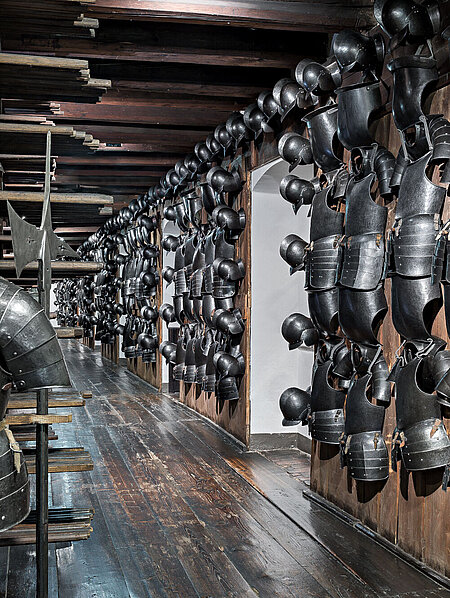The period from the 15th to the 18th century was marked for the then Inner Austrian provinces of Styria, Carinthia and Carniola by continuous armed raids and warlike conflicts with Hungarian rebels and the Ottoman Empire. Against this backdrop, the Styrian estates had the "Landschaftliches Zeughaus" built between 1642 and 1644 and acquired the weapons and implements of war now stored there for the purpose of national defence. As a depot, the armoury henceforth represented the most important equipment centre in the southeast of the Habsburg Empire.
With the decline of armed conflicts in the 18th century, the armoury lost its importance. When Maria Theresa, in the course of a reform, decided to centralise the army and close the armoury, the estates requested its preservation as a "monument to the history of the country". In 1882, the provincial armoury was opened to the public for the first time. With the takeover of the armoury building and its holdings by the Joanneum, founded by Archduke Johann, the final museumisation of the historical complex including its inventory took place. As emphasised in the 76th annual report of the museum for the year 1887, the Styrian Armoury was to remain "a self-contained collection". When it was incorporated into the Joanneum, it was renamed the "Landeszeughaus", and with the dissolution of the Duchy of Styria in 1918, ownership of the house was transferred to the newly created province of Styria.























